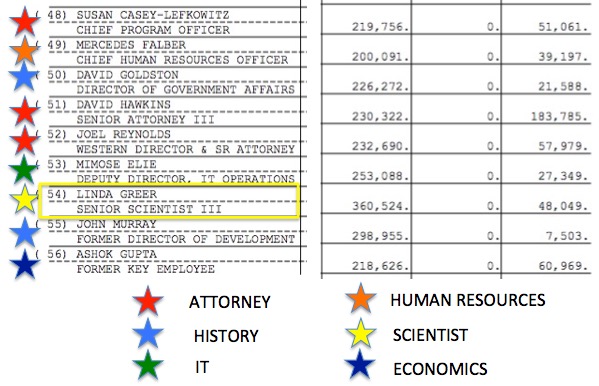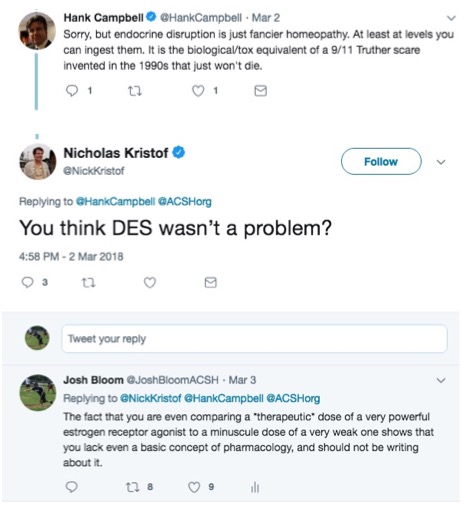by Jeff Stier July 10, 2018 @
Catallaxy Files and
@ Jeff Steir
In the era of self-driving cars, big data and increasingly sophisticated bio-medical advances, the age-old question of how regulation can keep up with technology is more relevant than ever.
Scientific advances touch every aspect our lives, often in ways we rarely think about. Today, we live longer, healthier, more productive and more enjoyable lives because of our access to products that were unimaginable for most of human history. So it's important to get the right balance when regulating our modern world, to both keep us and our planet safe, while fostering innovation that benefit society.
The debate over regulation often devolves into a debate about "too little" versus "too much" regulation, split along the ideological divide. Too little regulation, goes the argument, and we are exposed to too much risk. Too little, and we don't advance.
This binary approach, however, represents the dark-ages of regulatory policy. It was more frequently relevant when our tools to measure risk were primitive, but today's technology allows much more precise ways to evaluate real-world risks. With less uncertainty, there's less of a need to cast a broad regulatory net.
Regulation not warranted by countervailing risk just doesn't make sense. That's why a pseudoscientific approach, dubbed the "precautionary principle," behind much of today's regulation is so pernicious. This dogma dictates that it's always better to be safe than to ever be sorry. The approach is politically effective not only because it's something your mother says, but because it's easier to envision potential dangers, remote as they may be, than potential benefits. Uncertainty, it turns out, is a powerful tool for those who seek to live in a world without risk.
But what happens when regulators
can get a reasonably good handle on benefits and risks? Some potential risks have been eliminated simply because the basis for the concern has proven to be unwarranted. For more than two decades, the artificial sweetener, saccharin, came with a cancer warning label in the U.S.But it turned out that the animal experiment which led to the warning was later found to be irrelevant to humans, and the warning was eventually removed.
Warning about a product when risks are not well-understood is prudent. But it would be absurd to continue to warn after the science tells us there's nothing to worry about.
Today, an analogous situation is playing out in the EU, where activists are using outmoded tests not just to place warning labels on silicones, a building block of our technological world, but to ban them outright.
The playbook is predictable: as the scientific basis for a product's safety grows, opponents go to increasingly great lengths to manufacture uncertainty, move the goalposts and capitalize on scientific illiteracy to gain the political upper-hand.
We've seen these tactics employed in opposition to everything from growing human tissue in a lab, to harm-reducing alternatives to smoking, such as e-cigarettes. Now, the effort to manufacture uncertainty is playing out in the debate over the environmental impact of silicones, which are used to in a wide range of consumer, medical, and industrial products.
Fortunately, in the case of silicones, regulators in a number of countries, including Australia, have put politics aside and adhere to appropriate scientific methods to inform their decision-making.
The Health Department's National Industrial Chemicals Notification and Assessment Scheme
published an environmental assessment for certain chemicals used to make silicones, in particular, a class of chemicals called siloxanes. Silicones have unique properties which make them useful in a wide range of applications, including aviation, energy efficient LED lighting, medical products and personal care products. But their widespread use and unique properties have raised questions about their effect on the environment, such as whether they bioaccumulate and pose a risk to aquatic life. The report employs a risk-based approach, the very type that European-based precautionary principle advocates oppose.
Here's where we get back the issue of uncertainty. Advocates for restricting the use of certain siloxanes rely primarily on studies done in laboratories, which don't replicate how the chemicals respond to real-world conditions, where for instance, they quickly evaporate. (This property is what makes them particularly useful in sunscreens which spread easily and evaporate quickly.)
Laboratory studies are a valuable part of evaluating chemicals because they can identify the potential that a particular substance poses a hazard. But
hazard assessments are of limited value without considering real world circumstances. To do that, scientists do risk assessments, which takes into account factors such as the level of exposure to the hazard in conditions being evaluated.
We like to look at it this way: falling out of a boat and drowning to death is a hazard. However the risk of drowning in a desert is so low, because there's no exposure, that it a risk not worthy of concern.
This rational approach to hazard and risk was successfully adopted in Canada. Environment and Climate Change Canada (ECCC), using real world exposure information, decided to minimize exposure to a level that didn't degrade the environment, requiring monitoring from certain industrial sources. In other words, the ECCC didn't just consider the hazard, they also considered the risk. As a result, Canada did not ban consumer use, but, instead, took steps to reduce environmental exposure from only a narrow group of industrial sources that were potential problems.
With regard to one siloxane, D4, ECCC regulators found that the chemical "is entering or may be entering the environment in a quantity or concentration or under conditions that have or may have an immediate or long-term harmful effect on the environment or its biological diversity." But instead of banning its use, consistent with their risk management approach, they required a significant reduction of "D4 releases to the aquatic environment" and encouraged the use of alternatives to reduce or minimize risks.
On D5, Canada's regulators did something even more practical. Recognizing industry objections to the E.U.-style modeling approach, which ECCC initially used for D5, the Board of Review took real-world exposures of D5 into account. Then they did what all good scientists should be prepared to do: they reversed course after finding that new, more accurate data conflicted with their initial findings. In light of the improved information, the ECCC regulators wrote that "it is virtually impossible for Siloxane D5 to occur in any environmental matrix at concentrations sufficient to produce harm to the environment."
Similarly, the U.S. Environmental Protection has been working in concert with manufacturers to measure the degree to which key chemicals used in the manufacture of silicones are released into the environment, as well as what happens to the chemicals in real world circumstances, rather than through modeling or laboratory studies which don't necessarily reflect what happens in nature.
Australia's report is consistent with these approaches, noting that "[t]he direct risks to aquatic life from exposure to these chemicals at expected surface water concentrations are not likely to be significant."
This is the very type of scientific analysis that European activists disdain. Because for them, environmental protection is not measured by outcomes, but by the severity of restrictions, regardless of the quality of science used to justify them.
We support tough environmental regulation when the best science supports it. But sadly, many of today's environmentalists see science only as a tool to advance an anti-progress political agenda. When the science contradicts the agenda, the science is the first to fall by the wayside.
In legal circles, they say "If you have the facts on your side, pound the facts. If you have the law on your side, pound the law. If you have neither on your side, pound the table." The opposition to risk-assessments is the scientific equivalent to pounding the table.
The value of the Canadian and Australian approach is that consumers will continue to benefit from improved product performance provided by silicones. The environment will benefit as well, given silicones widespread use in green energy products, from solar panels to wind turbines and even in energy efficient lighting.
Australia's risk-based approach should be a model for other governments assessing not only silicones, but all innovative products because it ensures the protection of the environment, while at the same time, when the science justifies it, also protecting consumers' access to incredibly useful products.
Jeff Stier is a Senior Fellow at the Consumer Choice Center.
Follow him on Twitter, @JeffAStier








